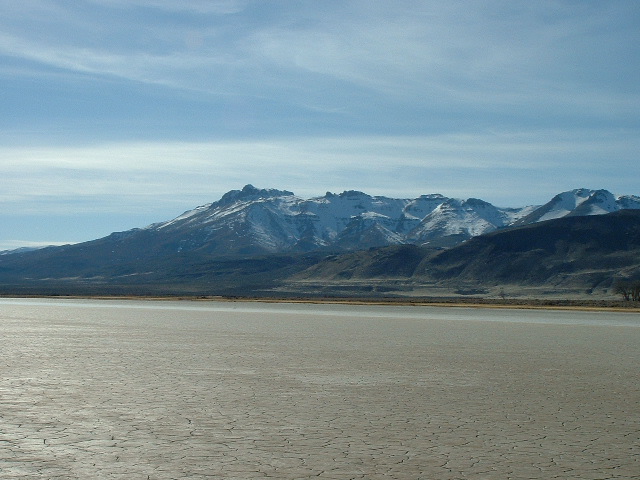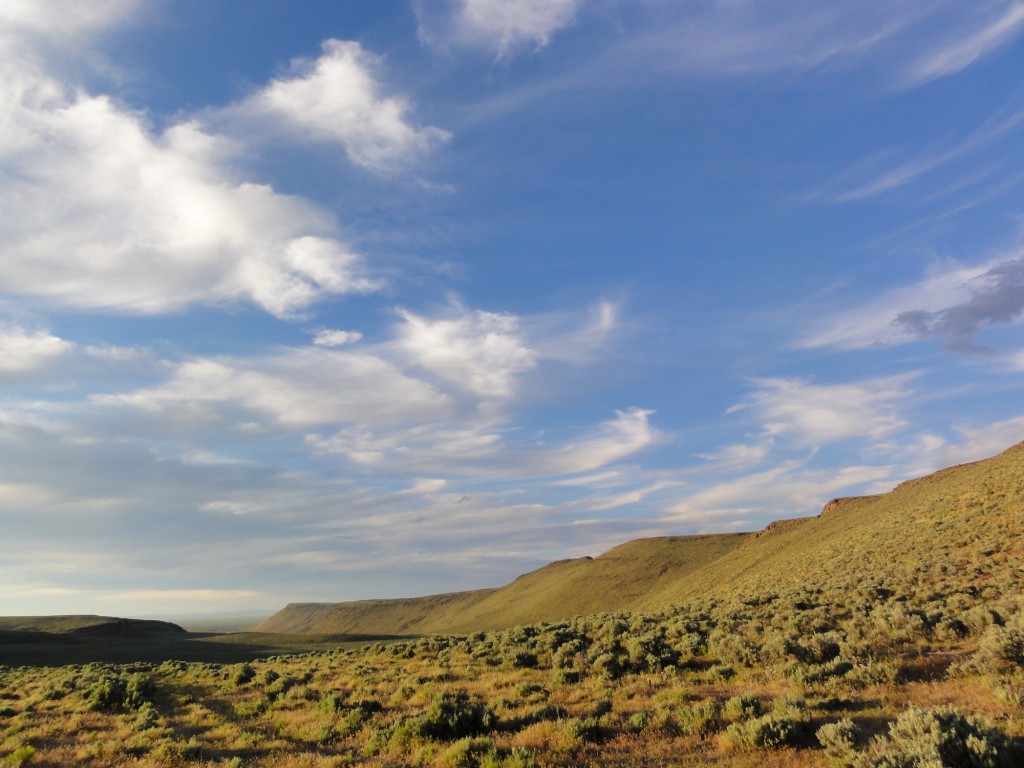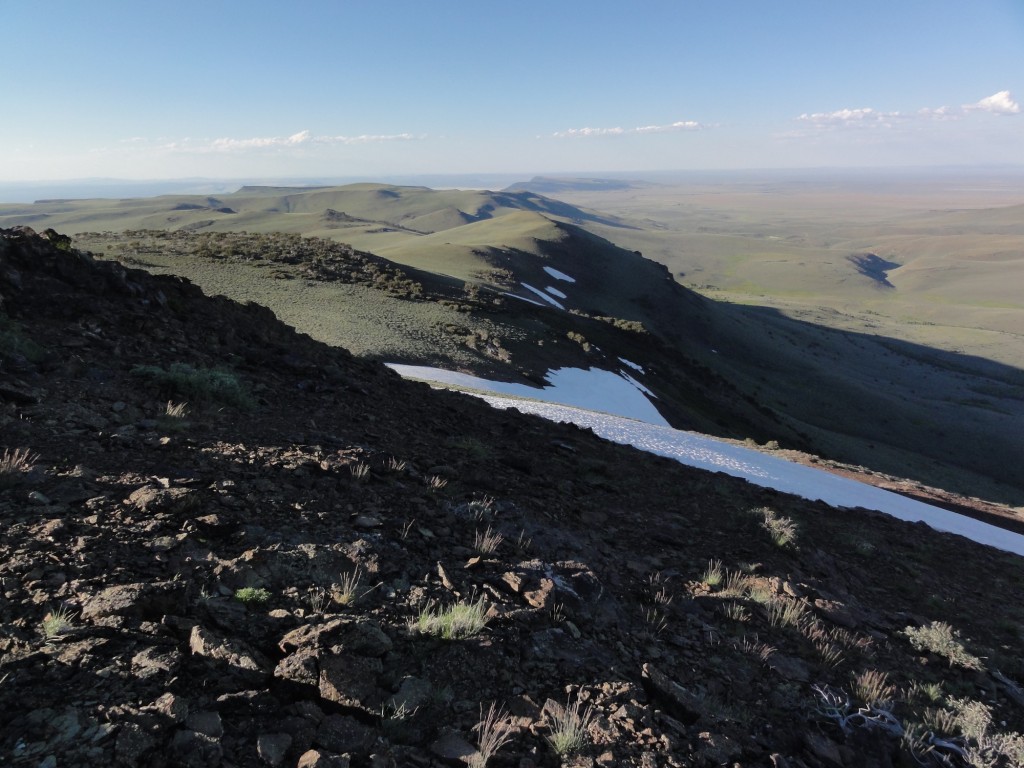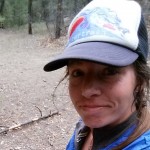The Thru-Hike You’ve Never Heard Of: The Oregon Desert Trail
By Renee Patrick
The quintessential Oregon that comes to mind for many is one of wet, lush forests, rocky coastlines, and snowy peaks, but on the other side of the Cascade Mountains lies a high desert landscape that covers almost half of the state. For Brent Fenty, Oregon Natural Desert Association’s (ONDA) executive director, this immense desert has captivated him since childhood, and one sleepless night a few years ago he began imagining a way to connect the highlights of this amazing landscape.

As a backpacker and experienced PCT thru-hiker, Brent immediately envisioned a trail where hikers, bikers, and even horseback riders could traverse the stunning vistas of the Oregon desert. At the same time, the trail would highlight some areas ONDA (a conservation organization) has been successful in protecting, or are currently trying to protect like the Oregon Badlands, Hart Mountain National Antelope Refuge, Steens Mountain Wilderness, and the Owyhee Canyonlands.
Volunteers hit the ground in 2011 to start creating the 750 mile route, and over the following few years the Oregon Desert Trail (ODT) emerged as an immersive desert experience that can be explored through cross-country travel, old roads, and existing trail.
By nature, the ODT is a remote backpacking experience. The desert in this part of the country is sparsely populated, and one will be much more likely to see herds of pronghorn antelope and the well-camouflaged sage grouse than other people. And if you like star-gazing, this is the trail for you. The south eastern corner of Oregon has one of the last uninterrupted night-skies left in the country. No light pollution means unparalleled views of the Milky Way and stars thicker than you can imagine.

Interested in geology? The ODT winds around the edge of the Great Basin, an area where any rainfall drains internally instead of reaching the sea, and is marked by massive fault block mountains. From Abert Rim which rises 2,490 feet from the valley floor and stretches 30 miles long, to Steens Mountain, a 50 mile long mountain which presides a stunning 5,553 feet above the Alvord Desert, a dry lake bed that covers 84 square miles, the Oregon Desert Trail hits these highlights and more.
Perhaps you like hot springs? The trail passes near the developed Summer Lake Hotsprings and Hunters Hotsprings, as well as Hart Mountain Hotsprings, Alvord Hotsprings, and several soaking pools in the Owyhee Canyonlands. There is nothing better than a soak after a long day of hiking, and the ODT provides!
There are challenges to a trail of this type. At this stage, Oregon Desert Trail hikers need to be experienced with map and compass or very comfortable using a GPS device as the route is unmarked and contains quite a bit of cross-country travel. However, for those looking to break free from a traditional trail experience, this is the hike for you. There is freedom in the desert, freedom to make your own routes, to explore a near-by butte or canyon, and truly immerse yourself in a trail that isn’t quite a trail.

Water can be quite elusive in this part of the state, and while this winter has provided much more snowpack and rain than the last few years, water isn’t a guarantee, and hikers need to be prepared for long distances between water sources, or to cache water for themselves. Water availability is perhaps the most important aspect of hiking the Oregon Desert Trail, but resources will soon be available for hikers that will give them access to historical data on reliable, questionable, and unreliable sources along the trail, as well as water caching guidelines.
The first 200 miles of the trail have been added to the popular mapping website and app, The Hiking Project, with other sections due to be included soon. The Hiking Project’s app allows hikers to follow the route on their smartphones, even while out of cellphone or data range, and marks important waypoints like junctions between cross country and trail, and water sources. All data correlates with the data book/water chart (due to be released in early March 2016), map set, and guidebook (available here).
By the time hikers reach the Owyhee Canyonlands area, some 550 miles into the route, it might be time to put away the boots and get out the packraft; the last 200 miles of the trail trace the Owyhee River’s path through what has been called “Oregon’s Grand Canyon.” Find out more about ONDA’s efforts to protect this amazing and remote ecosystem, and the grand finale to the Oregon Desert Trail.
With an iconic trail like the Pacific Crest Trail just over the mountains from the Oregon Desert Trail why choose the desert?
- True solitude: It’s hard to find real solitude on the major trails these days with the recent popularity surge in long-distance hiking.
- Hot springs: Soak the aches and pains of a day on the trail in one of the numerous hot springs along the trail.
- History: The oldest human remains in North America have been found in this part of the desert, dating some 14,000 years ago!
- Habitat: The high desert is the perfect habitat for hundreds of different desert species like pronghorn, sage grouse, mule deer, and jackrabbits.
- Trail towns: Many of the 16 communities along the ODT are tiny, but offer amazing hospitality and are a great resource for learning more about the area.
In short: for a real adventure, think of the Oregon Desert Trail.
Originally Published March 7th, 2016.
 Author: I have always placed more emphasis on having experiences and challenging myself than keeping a steady job and padding a bank account. This sense of exploration led me to join the Peace Corps after college, and hike my first long trail soon after. Eight thru-hikes and 10,000 miles later I am still in love with discovering my surroundings on foot and now I’m able to use all those experiences in my newest endeavor as the Trail Coordinator for the 750 mile Oregon Desert Trail. I will never stop hiking, and I like to say my favorite trail is the one I haven’t hiked yet. Read more from Renee on her blog.
Author: I have always placed more emphasis on having experiences and challenging myself than keeping a steady job and padding a bank account. This sense of exploration led me to join the Peace Corps after college, and hike my first long trail soon after. Eight thru-hikes and 10,000 miles later I am still in love with discovering my surroundings on foot and now I’m able to use all those experiences in my newest endeavor as the Trail Coordinator for the 750 mile Oregon Desert Trail. I will never stop hiking, and I like to say my favorite trail is the one I haven’t hiked yet. Read more from Renee on her blog.
